Inside Fine Art Estates, the Startup That Aims to Democratize Art-Buying and Provide a Home for Forgotten Work
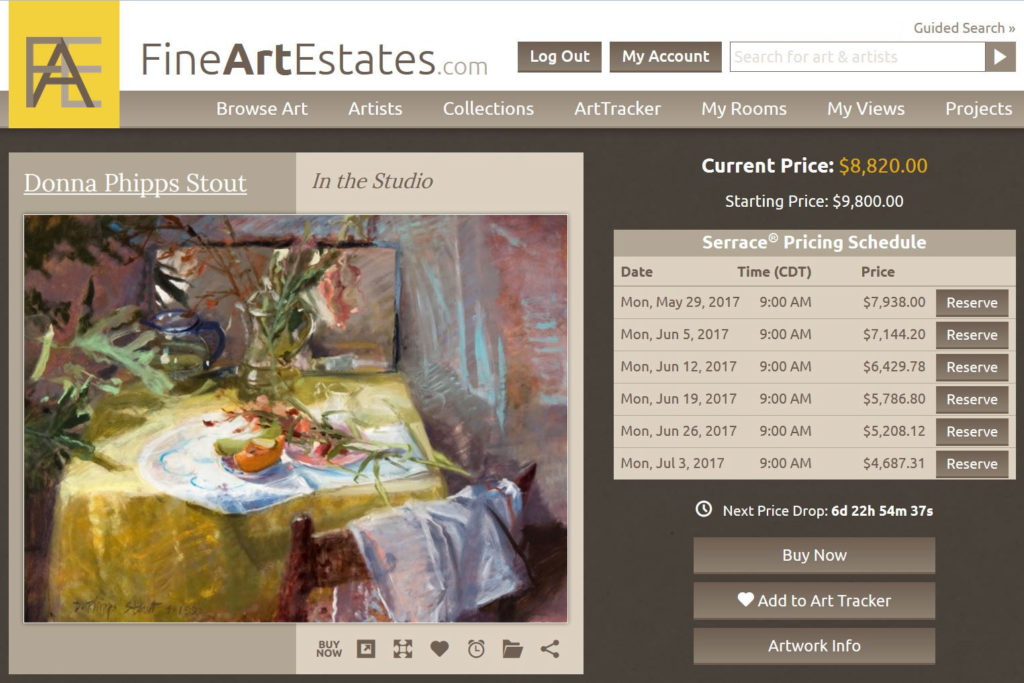

Artnet Gallery Network

In the last couple of years, the field of upstart art companies trying to get a piece of the e-commerce pie has become increasingly crowded.
Fine Art Estates (FAE), a new web-based platform for buying and selling art, is one of them. But the company, which was launched in November of 2017 by Dallas-based art dealer Kevin Vogel, differs from its peers in a few important ways.
FAE does not traffic exclusively in the traditional art market—the big-time galleries and auction houses. Rather, it specializes in fine art from lesser-known artists, as a select group of experienced dealers posts a diverse inventory of works consigned from artists’ estates or collections. The platform also prides itself on the level of transparency it affords: to sellers, it provides a dashboard to track the status of the consigned artworks; for buyers, it offers a new, democratized mechanism for selling art, which FAE calls the Serrace Sales System. The soon-to-be trademarked system provides every user with a time-based discount schedule—automatically reducing the price of each artwork until it is sold or is about to fall below its reserve.

Kevin Vogel. Courtesy of Fine Art Estates.
Vogel has been connected to the Dallas art scene his entire life. His father, an artist named Donald Vogel, bought a six-acre patch of land with his wife, Peggy, in 1953. The elder Vogel designed and constructed a building on the property that would serve as a home, personal studio, and—not long after that—their own art gallery.
Donald Vogel launched Valley House Gallery in Dallas in 1954, selling mostly 19th- and 20th–century American and European art. A decade later, in 1964, Vogel became the first member of the Art Dealers Association of America from the South. Kevin took over the gallery some 20 years ago and co-runs it today with his wife, Cheryl. He has now worked at Valley House for over 42 years.
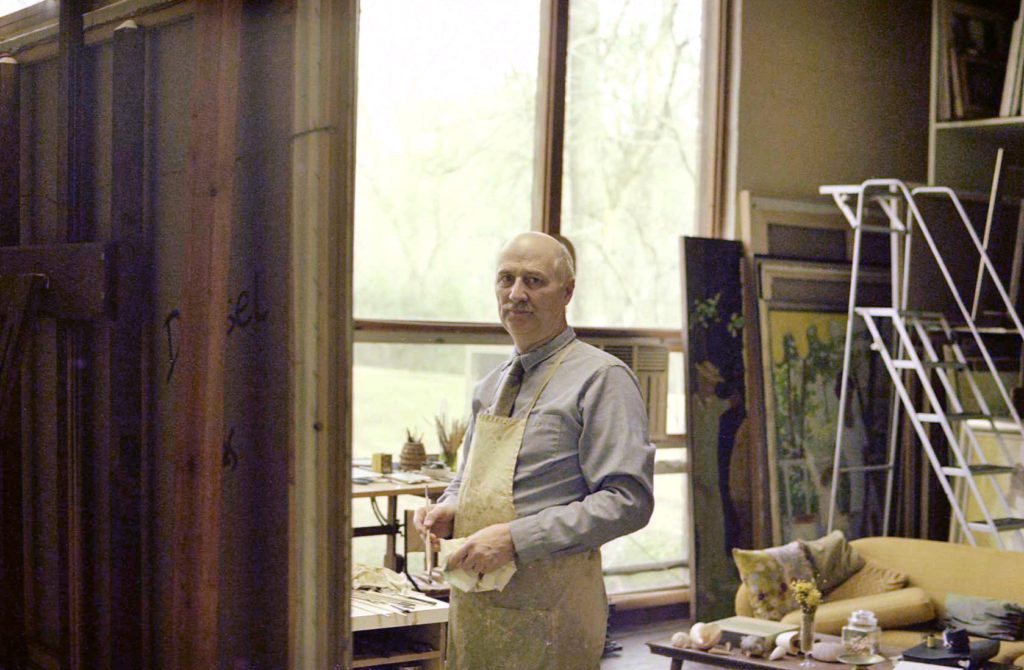
Donald Vogel in his studio, circa 1975. Courtesy of Fine Art Estates.
The idea of an online marketplace based largely on the estates of lesser-known artists first came to Vogel roughly five years ago, after a personal tragedy. An artist friend of his had just passed away after a long battle with cancer.
“The artist’s widowed husband called me shortly after that,” Vogel tells artnet News. “He asked me, ‘What do I do with all this art?’”
Vogel, struck by the sadness of a person suddenly confronted with the task of taking care of his deceased spouse’s life’s work, wasn’t sure how to help. “I didn’t know how to answer him. I knew the artwork was of good quality and salable, but there was far too much of it to sell through any conventional process.”
Vogel quickly learned that this was not a unique problem. In fact, it was a common one artists and their families often had to face in this situation. And it needed a solution.
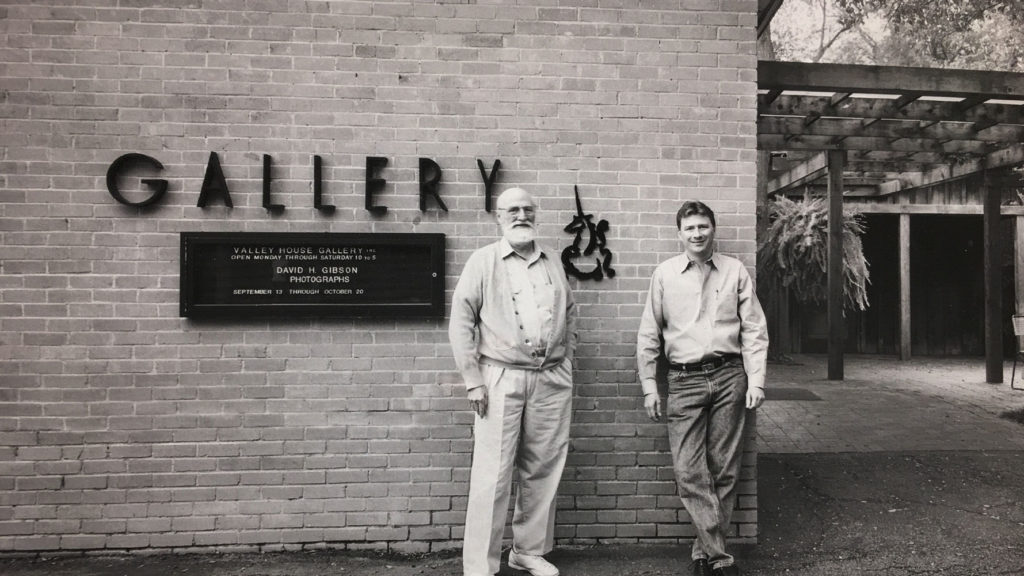
Kevin Vogel with his father, Donald, in front of the family’s Valley House Gallery, 1990.
“I became keenly aware of how unprepared most artists are to deal with the artwork that will remain in their estates when they pass away,” Vogel explains. “Most artists are not successful or wealthy enough to warrant the creation of a foundation to carefully handle the promotion and care of their work. It often ends up in the hands of a spouse or other family member, sitting in a garage or storage container, probably without climate control, and whatever value this artwork may have had is eaten away by warehousing expenses and the ongoing risk of environmental damage.”
However, for Vogel, there was more than just the practical concerns of storage and upkeep. There was also the importance of archiving.
“Today, if you search online for an artist who was moderately successful in the 1960s through the early ‘90s, unless a gallery has taken on that artist’s estate in the last 10 years, you will probably not find much biographical information on them, if any,” Vogel says. “It is my goal that FAE be a place where scholarship begins for those seeking information on many talented artists.”
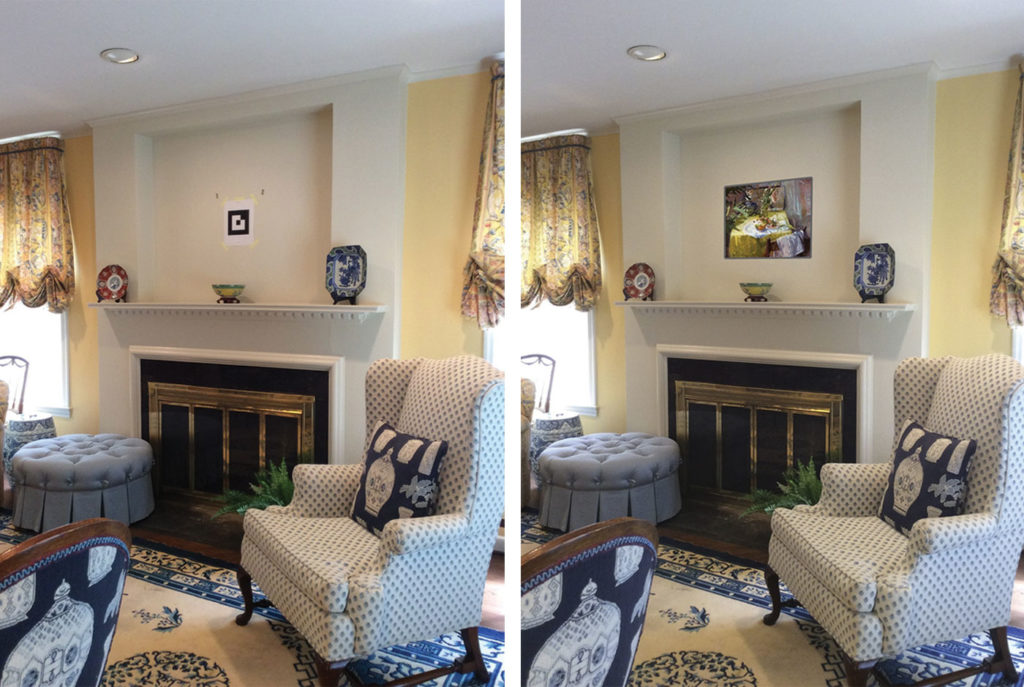
FEA’s augmented reality app allows users to see how the platform’s artworks look in any room. Courtesy of Fine Art Estates.
Vogel believes FAE offers another advantage over competitors: a focus on audiences outside of the realm of collectors and consultants, particularly interior designers and architects.
“Dealers don’t often take the design world very seriously. It can be a missed opportunity since design professionals often have an influence on a large proportion of all art sales,” Vogel says. “Although anyone can purchase artwork from FAE, I incorporated tools and apps specifically for the design trade, providing each professional with their own personal fine art sourcing tool.”
Platform users can create, name, and track projects. They can save complex search histories that can be rerun, and they can set up automatic alerts for instances when new works, meeting their search criteria, are added to the site.
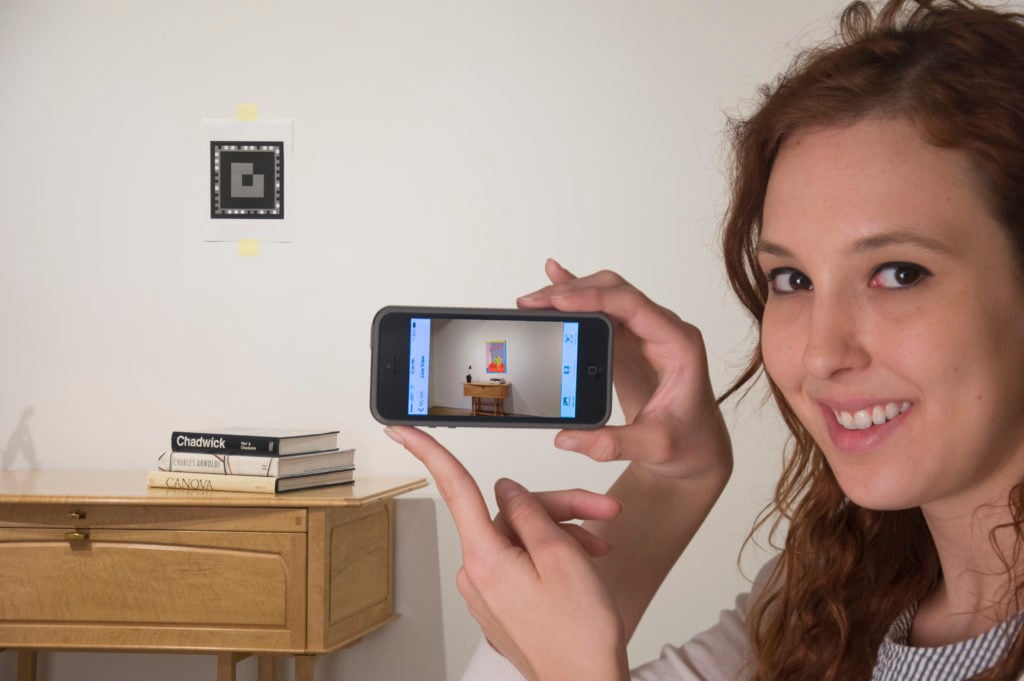
A demonstration of FAE’s augmented reality app. Courtesy of Fine Art Estates.
Additionally, FAE provides an innovative way for users to preview a work before purchasing it. Using the website’s integrated apps, you can virtually install an artwork on a wall of your home or office by printing a “target,” and attaching it to a wall where an artwork is desired. By viewing it on the screen of an iOS device, you can then see a selected artwork from the FAE database superimposed over the target while maintaining its scale and perspective as you move around the room. Users are then able to adjust the perspective and brightness of the artwork, add a frame to it, and assign it to a project.
Indeed, the app is just the first in a series of new developments the company has planned for the near future. FAE is in the process of improving the app technology so that it can incorporate different frame styles, multiple works of art at once, and move three-dimensional objects such as sculpture off the wall plane and into the room maintaining its virtual scale.
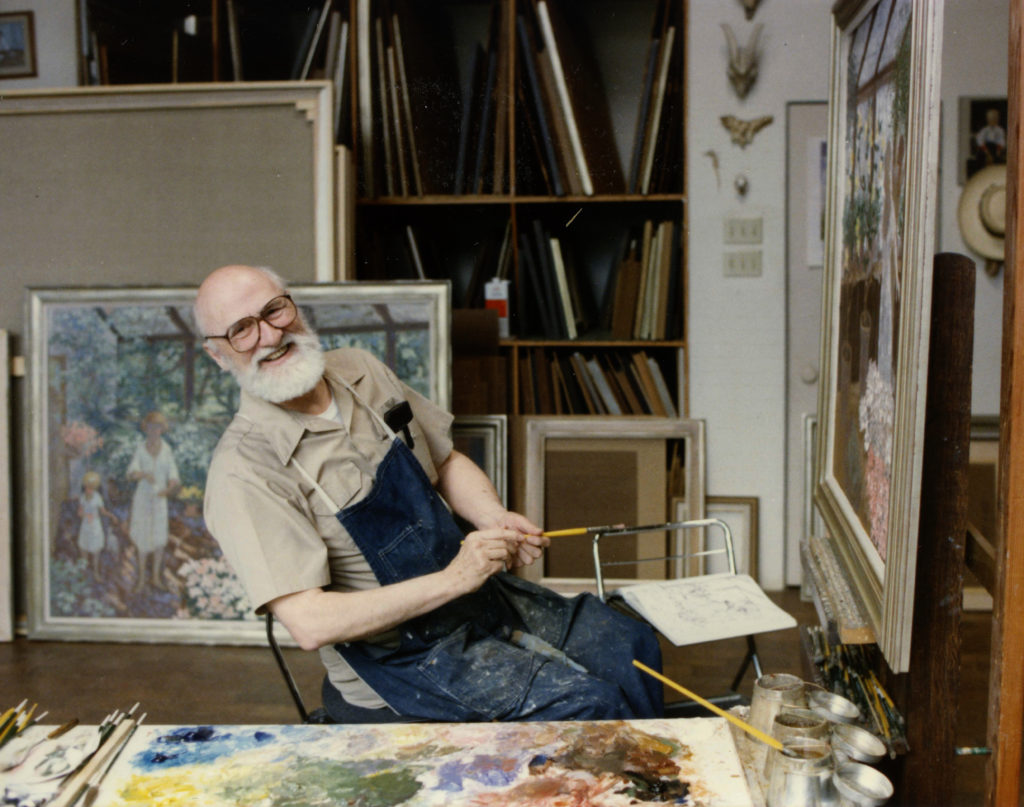
Donald Vogel in his studio, 1992. Courtesy of Fine Art Estates.
Vogel also plans to expand geographically—he intends to recruit one dealer in every mid-sized American city. “Communication and accessibility are very important elements in the FAE construct,” he says. “An artist will feel more confident turning artwork over to a dealer who is local, one they can easily visit in person, rather than shipping their artwork to someone they have only spoken to on the phone.”
Amid an ever-changing technological landscape, Vogel still believes the individual one-on-one experience with art should be compromised as little as possible. It’s a notion that harkens back to a quote from his father, which he often repeats: “You can get no more from a work of art than what you bring to it.”